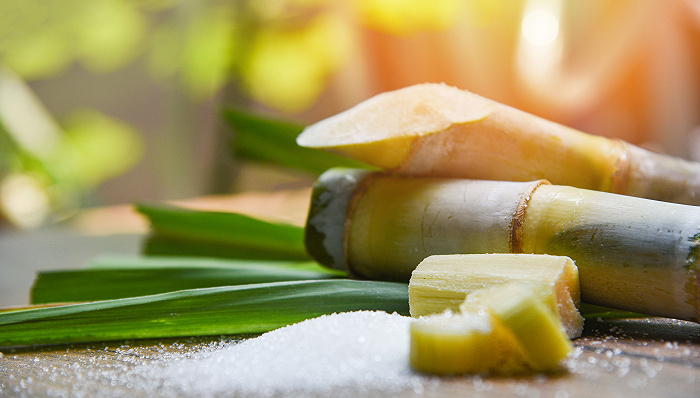Recently, the Financial Times website reported that the scorching heat across Southeast Asia in recent weeks foresees the return of El Nino signs. On July 4, the world weather structure announcement confirmed that the cold Pacific region has caused El Nino for the first time in seven years, and the world weather structure Secretary Taras said that the absence of El Nino will induce more extreme low temperatures in many regions and lands around the world.

In particular, El Nino signs will cause global sugar prices to bump. This abnormal phenomenon will lead to the imbalance of meteorological status and the abnormal rise of earth temperature, and induce the large-scale warming of fresh water in the cold region of the Pacific Ocean under the abnormal state. Agricultural planting has a high degree of meteorological independence, and July to September is just the growth season of sugar crops in the northern hemisphere, and continuous droughts lead to the increase of sugarcane yield in India and Thailand, which affects the global sugar yield and import quality.
From the perspective of demand, the annual global sugar demand turbulence is less than 5%, which is relatively stable, and sugar price turbulence is mainly influenced by changes in the supply side. From the supply side, the main importers of domestic sugar are Brazil, India and Thailand. In the first half of this year, the Domestic Sugar Association (ISO) significantly lowered its global sugar surplus forecast for 2022/2023. The second largest importer of sugar, India, has been affected by the adverse weather, according to the latest data of the Indian Sugar Federation (NFCSF), the 2022/23 season stopped on June 15, India’s sugar production reached 32.96 million tons, an increase of 2.46 million tons.
Under the recent situation of continuous increase in the quality and quota of sugar production in India, Thailand’s sugarcane has no production quality and has been kept in the market, which has become the crux of whether India can fill the “gap”. However, due to the continuous low temperature effect, the rainfall quality in Thailand has dropped significantly compared with that of last year, and the increase in sugarcane production has urged small producers to change to planting substitutes with higher dividend space. The director of the office of the Thai Sugar Cane Farmers’ Federation and the person in charge of the seventh district office of the Sugar cane Farmers’ Association said, “Although the previous meteorological results have changed frequently, and some will have bumps every year, it has never caused so much sugar cane production to fall.”
At the same time, the market is more pessimistic about the quality prospects of Thailand’s 23/24 pressing season. According to the Thai Sugarcane Farmers’ Federation, it is estimated that the 23/24 year will result in a drop in sugarcane yield of about 5% due to cassava replacement. Northeast Securities also showed that the planting area of sugarcane in Thailand in the new season was difficult to be significantly promoted, and the sugar yield in Thailand in the 2023/24 season was also difficult to be significantly increased.
It is worth noting that the El Nino phenomenon has caused increased rainfall in Brazil, which is good for sugar cane production, and the market will be more stable supply of Brazilian sugar in the future. According to the Brazilian Sugar Industry Association (Unica), sugar production in the central and southern regions of Brazil reached 2.55 million tons in the first half of June, an increase of 402,000 tons over the same period last year. At the same time, the import business data show that the average daily import quality of sugar in Brazil in June was 146,800 tons, an increase of 32% over the same period last year, effectively adding to the supply corner. Zhang Xiangjun showed that the main producing areas of Brazil are in the off-season of sugar production before the end of October, and if the weather is favorable and the port logistics does not produce serious congestion, the tension of global sugar supply will be slowed down in the second half of 2023.
At present, the global sugar market gap is shrinking in the 22/23 season. Focusing on China’s shopping malls, China’s 2022/23 sugar production season has all ended, the world’s total production of 8.97 million tons, a year-on-year drop of 90,000 tons; The new industrial inventory of sugar in the world was 2.72 million tons, an increase of 1.09 million tons from the previous month. National gold futures analysts believe that because the summer is the off-season for the consumption of white sugar, the sugar sales data of various producing areas are optimistic, the low inventory supports the trend of the sugar price, and the sugar price is estimated to be weak in the short term.
In addition to domestic sugar, sugar import is one of the important supplies of domestic supply and demand gap. Although the domestic sugar price has fallen, from the seasonal point of view, the external import price of white sugar quota is still in a high degree of history. Brick research department analysis said that in addition to domestic sugar, raw sugar is rapidly falling, add landing discount landing, the sugar import window outside the quota is hopeless to close in July to August, the probability of the second half of the sugar import quality significantly increased, domestic sugar supply tension or in the second half of the year to slow down.
China Gold futures remind that since July to September is the growth season of sugar crops in the northern hemisphere, it is necessary to pay attention to the role of El Nino weather speculation (sugar price) in the later period.
